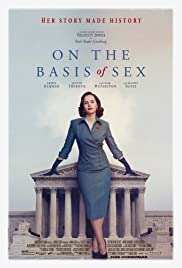 |
| Ruth Bader Ginsburg (Public domain) |
Last night, I went looking for articles about the word Ruthless. (After Babe Ruth retired the Yankees were Ruth-less, for example.) The one that ended up capturing me was a 2019 60-page research paper titled Notoriously Ruthless: The Idolization of Justice Ruth Bader Ginsburg. The author, Lucille Moran, takes a deep look into the nature of Celebrity Culture and how it came to pass that a Supreme Court Justice could become a media darling. (I will share the paper's abstract at the end along with a link.)
* * * *
In the early 1980's I read a short story by Anton Chekov that featured a man on a railroad train complaining to this stranger next to him about the idiocy of celebrity. In the course of his complaining he mentions his own noteworthy achievements as an engineer who designed all the bridges that this train will pass over between here and its destination. He mentions other remarkable feats that no one is even aware of. Instead, there is an athlete on this train, a complete lunkhead, who is so famous that when they arrive at the next station there will be a large crowd and media there to greet him. He himself will exit unnoticed.
The striking thing about this story is that it was written more than 120 years ago. In other words, the notion of celebrity is nothing new. It has, however, taken on new forms.
One of the references cited by Ms. Moran is a story in Hedgehog review titled From Barnum to "bling bling": The Changing Face of Celebrity Culture. The article details P.T. Barnum's audacity, dazzling crowds in an era before television and broadcast media.
The advent of Hollywood and television only amplified the deification of the rich and famous. Writes Amy Henderson, "By mid-twentieth century, this heroic pedestal (statesmen and generals) was claimed not by politicians and generals but by sports stars and movie legends—by “personality” rather than “character.”
"In his groundbreaking book The Image, Daniel Boorstin described this metamorphosis as one from traditional “larger-than-life” heroes known for their achievement to “celebrity-personalities” recognized for their “well-knownness” in a society enamored of “pseudo-events.”
As early as the 1960s Andy Warhol exploited this longing for "15 minutes of fame" at his "Factory" in New York City. He was dead on in this perception which eventually evolved into Reality Televsion as well as shows like America's Got Talent.
What Lucille Moran explores is how a Supreme Court justice, who is appointed for life and doesn't ever have to be famous or re-elected, could become a pop culture celebrity.
She describes how celebrity culture became intertwined with consumer culture, that fame had financial benefits. As a result a whole industry of "publicity regimes and famemaking apparatus" emerged.
 |
| 2016 films about RBG |
Further on she writes, "The emergence of celebrity politicians in society has lead academics to an overwhelming consensus that this celebrification of politicians strongly correlates with the personalization of politics and a general weakening of political parties."
At this point this first section of her paper turns to the subject at hand, RBG, and how it came about that she herself had become a celebrity. "My thesis seeks to fill this void in the research literature by examining two growing political phenomena—partisanship and identity—and how these are playing a role in Justice Ginsburg’s fame."
You can read the full story here at the Digital Commons.
HERE'S THE ABSTRACT
It is now a fixture of mainstream commentary in the United States that Supreme Court Justice Ruth Bader Ginsburg has become a popular idol on the political left. Yet, while Justice Ginsburg’s image and story has reached an unprecedented level of valorization and even commercialization, scholars have yet to give sustained attention to the phenomenon and to contextualize it: why has this idolization emerged within this context, and what is its impact? This paper situates her portrayal in the cultural imagination as the product of two political forces, namely partisanship and identity politics. Considering parallel scholarly discourses of reputation, celebrity, and mythology in the legal context, and comparing the figure of Justice Ginsburg to the construction of other justices (historic and contemporary) in elite and popular discourse, the paper examines how this phenomenon represents both a continuity and break for the cultural position of judges in America.
* * * *
See: Ginsburg in Popular Culture
Trivia: One of Bob Dylan's daughters graduated from MacAlester College. A friend of mine from St. Paul said he believes he saw Bob leaning against a tree a little distance away from the crowds on graduation day.
Greta Thunberg
ReplyDelete